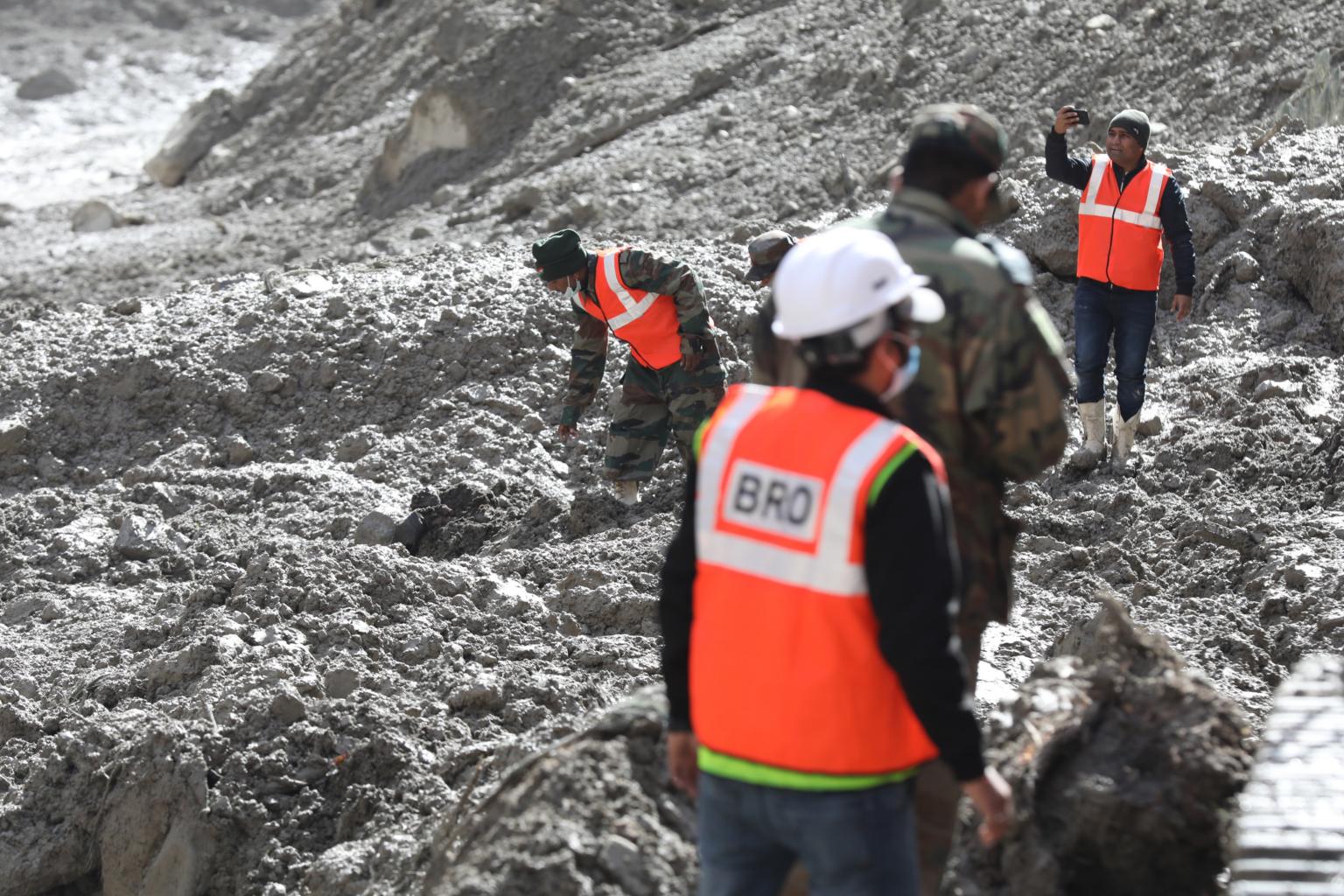Time running out for Indian workers trapped since glacier disaster
Sign up now: Get ST's newsletters delivered to your inbox

Thirty-two bodies have been found so far.
PHOTO: EPA-EFE
Follow topic:
TAPOVAN, India (AFP) - Time was running out to save dozens of people trapped inside a tunnel three days after a devastating flash flood likely caused by a glacier burst in India's Himalayan north, officials said on Wednesday (Feb 10).
More than 170 people were still missing after a barrage of water and debris hurtled with terrifying speed and power down a valley on Sunday morning, sweeping away bridges and roads and hitting two hydroelectric plants.
Thirty-two bodies have been found so far, officials said on Wednesday. It may take days for more bodies to be recovered under the tonnes of rocks and other debris and the thick blanket of grey mud.
Twenty-five of the bodies were yet to be identified. Many of the victims are poor workers from hundreds of miles away in other parts of India whose whereabouts at the time of the disaster may not be known.
The main focus of the massive rescue operation, under way day and night since Sunday, is a tunnel near a severely damaged hydroelectric plant that was under construction at Tapovan in Uttarakhand state.
Workers there have been battling their way through hundreds of tonnes of sludge, boulders and other obstacles to try and reach 34 people who rescuers hope are alive in air pockets.
"As time passes, the chances of finding them are reducing. But miracles do happen," Piyoosh Rautela, a senior state disaster relief official told AFP.
"There's only so much that one can do. We can't push in multiple bulldozers together. We are working round the clock - man, machinery we are all working round the clock. But the amount of debris is so much that it's going to take a while to remove all that," he said.
Vivek Pandey, a spokesman for the border police told the Times of India that if the 34 are alive, the biggest concern is hypothermia, "which can be fatal in such conditions".
Outside the tunnel there were medical teams on standby with oxygen cylinders and stretchers, as well as anxious relatives.
Shuhil Dhiman, 47, said that his brother-in-law Praveen Diwan, a private contractor and father of three, had driven into the tunnel on Sunday morning with three others when the flood hit.
"We don't know what happened to him. We went near the tunnel but there are tonnes of slush coming out. The tunnel has a sharp slope from the opening and I think water and slush has gone deep inside," Shuhil Dhiman told AFP.
"I am hoping against hope," he said. "The authorities are doing their best but the situation is beyond anyone's ability."
The disaster has been blamed on rapidly melting glaciers in the Himalayan region caused by global warming.
Building activity for dams, the dredging of riverbeds for sand and the clearing of trees for new roads - some to beef up defence on the Chinese border - are other factors.

